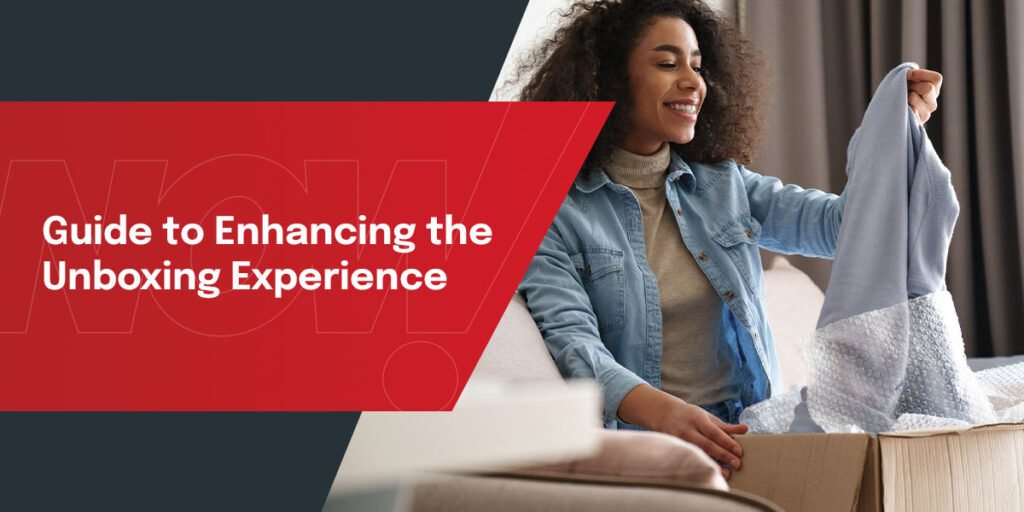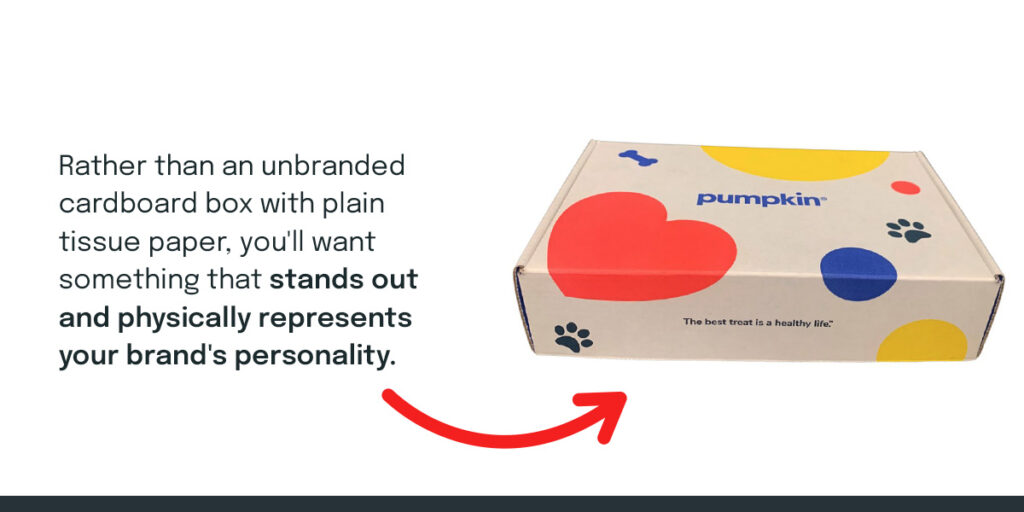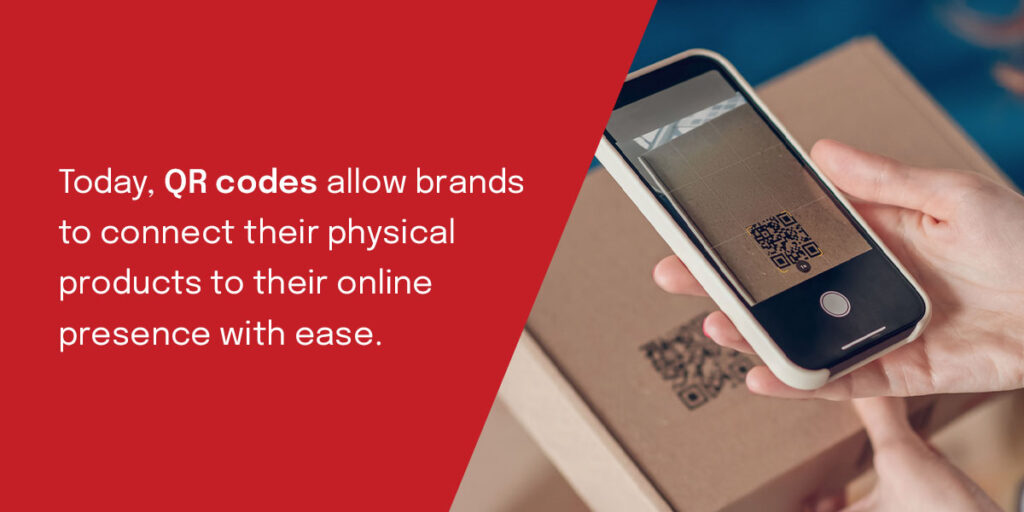
The moment of order delivery is one of the most important touchpoints for any business. Aside from the company’s product finally getting to the consumer, it is also a moment that decides whether your consumer wants to become a repeat customer or recommend your services to others.
Product unboxing unlocks a feeling of excitement and anticipation and, with the right strategies, allows you to let consumers hold those feelings long enough that they always remember your product when they think of similar services. This guide explores what defines an amazing unboxing experience, why it’s important and how you can enhance product unboxing for your customers.
The unboxing experience involves the process of taking purchased items out of the box and packaging and how the customer feels as they do so. Technically, every time a customer receives a package, they go through an unboxing experience — they open the box, find the product and unpackage it to find the product inside. However, each unboxing experience differs from the next, and some are far more impactful than others.
Across social media, you’ll find unboxing videos depicting consumers opening everything from makeup to tech gadgets and showing them off to friends and followers. Whether they’re made by casual consumers or popular influencers, these videos can have a major chain reaction effect that convinces people to buy. Sometimes, one viral unboxing video is enough to take a brand to the next level.
When a customer receives your product, you have an opportunity to make them a loyal repeat customer by curating a memorable unboxing experience. If you own an e-commerce business, any interaction you have with the customer matters, so the unboxing experience is especially important. With the right approach, you can even spread the word about your business — having your consumers’ unboxing experience captured in unboxing videos is one of the best ways to implement a post-purchase marketing strategy.

Rather than an unbranded cardboard box with plain tissue paper, you’ll want something that stands out and physically represents your brand’s personality. This approach is what will help you truly “wow” product recipients and attract more consumers to buy your products. Despite it potentially being your brand’s final interaction with the customer, you can jump-start several benefits that persuade consumers to purchase from your company again:
Here are three considerations for creating a box and packaging design that truly stands out, from the box’s exterior to the product’s presentation.
While plain boxes might be a more affordable option, the long-term financial benefits of an appealing branded box are undeniable.
Using branded boxes helps establish better brand recognition, and with eye-catching designs that align with your brand image, customers will be inspired to share images and videos on social media. Even if the consumer forgets to mention where they purchased the product, the answer will be loud and clear on the packaging, encouraging anyone who sees the post to make a purchase.
Plus, branded boxes ensure consumers instantly know who the package is from when it arrives, and an attractive exterior will build their excitement to unbox their items. When you put that much thought into your boxes’ presentation, customers recognize your effort and are much more likely to repurchase in the future.
You might think the exterior of the packaging and the condition and attractiveness of the product itself are all that matter when it comes to the unboxing experience. On the contrary, the interior of your box can help expand the narrative of a product into an immersive and personalized retail experience. In other words, you can make each of your consumers feel specially celebrated with the right elements.
Some effective interior box elements include:

How you curate the products in the box also speaks to how much you care for your products. For example, a messy arrangement of items might suggest you lack the time to give your customer a delightful experience. A careful arrangement of products shows that you take pride in your products and how they appear to your customers. This small action creates a lasting impression and further encourages them to share their unboxing — a neatly arranged box looks great on social media.
Choosing an appropriately sized and shaped box for each of your deliveries and package types can also help you avoid having too little or too much space left over that contributes to poor presentation.
Leaning into technology can help you create the perfect unboxing experience, and one of the best ways to promote your products and services is by including a QR code on the box or any note in the packaging. Similar to barcodes, QR codes are black-and-white patterns that link to information when scanned. However, unlike barcodes, QR codes are typically square and made up of pixels.
They’re easily scannable from multiple angles, and you no longer need to download a dedicated QR app to scan them. All you need to do is open the camera app on a smartphone — including Android and Apple devices — and point it at the code. A banner will pop up for you to tap, which will direct you to the QR code link.
This link can lead to anything you’d like to inform customers about or put on their radar. That information could be a more detailed “thank you” note or an invite to a social media platform where they can become a part of your community or share their experience with your product online. As a result, you can add a little extra touch to round out the unboxing journey.
There are two main types of QR codes:
Before QR codes became widespread, brands had to print links and social media channels onto the packaging design itself. This technique makes the packaging look cluttered and the user has to type out links manually, leading to mistakes and frustration.

Today, QR codes allow brands to connect their physical products to their online presence with ease. It’s convenient for customers, and with QR code functionality included in most smartphones, adoption has skyrocketed. By 2025, it’s estimated that over 100 million people in the United States will use QR codes, thanks to improved QR code scanning integration in smartphones.
Adding QR codes to product packaging has a variety of benefits for both the business and the consumer:
QR codes provide ample opportunities to connect with customers and promote your business. Below are six examples of how you can use QR codes to level up your unboxing experience.
Boost your online social media platforms by creating a QR code that links directly to them. You can link to a single social platform or provide a full list for the customer to consider. With easy access to your social media, the customer can learn more information, engage with your brand and share their experience with others.
QR codes make it possible to include links to videos within physical packaging. You can link to video campaigns that bring your product to life or video demonstrations that help the customer learn how to use the product.
If you have an email newsletter or other email marketing strategy, you can use a QR to direct customers to sign up. Getting this information will let you stay in contact with them and build brand loyalty over time. It may also encourage repeat purchases.
It’s important to provide product information so the customer can learn more and use products the correct way. Printing out hefty manuals and lists of information is expensive, can affect the environment and may overwhelm the customer. Instead, use a QR code to offer this information to customers in a digital format so they always have the information on hand.
If you’re trying something new or want to improve your product, feedback from customers will help tremendously. With QR codes, you can link directly to feedback forms on the packaging, increasing the chances of customers filling them out. You can also provide incentives for submitting feedback, such as a discount code. This technique is a great way to receive positive reviews to use in marketing, as well.
QR codes on packaging are the perfect way to share promotional offers and loyalty programs with customers as soon as they receive their product. You might include special discounts, current sale offers, free shipping coupons and rewards for repeat purchases.
Packaging QR codes must be just right for customers to scan them without hassle. Review the following best practices to create effective QR codes on your packaging:
While QR codes have been around for a while now, there’s never been a better time to adopt the trend to help you build a remarkable unboxing experience for your customers.
Are you ready to create an unforgettable unboxing experience? To do so, you need to work with a dedicated and qualified box printing company that can help you bring your vision to fruition.
Custom Boxes Now specializes in custom shipping boxes made from high-quality and sustainable corrugated cardboard. We’ve been helping customers create exceptional unboxing experiences for over 60 years, so no matter what you need, we’re confident we can make it a reality. What’s more, we make all our products in-house to offer you speedy delivery times and competitive rates.
View our custom box image gallery for inspiration for your packaging, and read over our customer success stories to see how we’ve helped past clients. If you’re ready to create your own custom packaging, start building your box today.